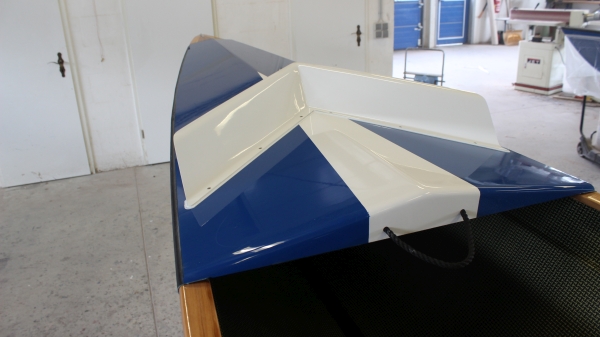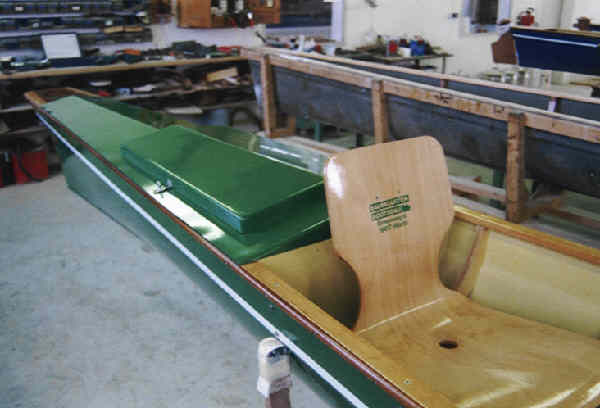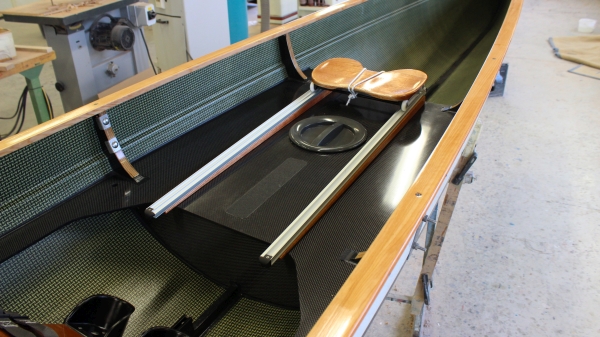Buy a sports rowing boat 3/3
Gig Boats for Rowing Clubs -Safety-
Which rowing boat do you need for which purpose?
Rowing is generally a very safe sport. However, appropriate measures can be taken to further increase safety for people and material.
The first and most important factor is the rower himself.
Appropriate training of the boat officers is crucial. If this is not available, then all other measures to increase security will not help.
Conduct boatman courses, which should also be water-specific. Just because someone gets along on the river Aller doesn’t mean that they should also drive a boat on the Rhine or on the Baltic Sea coast!
The crew must be strong enough to move the boat forward in adverse conditions to keep it manoeuvrable.
If possible, do not row with luggage in the boat on critical waters. As this allows the boat to dive deeper and reduce wave handling.
If waves hit the boat several times, moor if possible and empty the boat. Because of the water that has been taken over, the boat lies lower and the next waves have an easier time getting into the boat.
When traveling on unfamiliar waters, draw on the experience of other rowers in order to be aware of possible risks.
Use suitable rowing boats. C-boats have no place on a Norwegian fjord, nor are they suitable for luggage tours (see page 2).
With every rowing boat, the possibilities of use can be increased by bow and stern covers. In combination with bulkheads, this results in fully enclosed bow and stern spaces, which provide additional buoyancy.
However, boats with bulkheads where the covers have been left at home are significantly more at risk as the water that has hit the bow does not disperse throughout the boat.
Just putting on a bug cover reduces the risk of drowning by at least 80%. It should be the first measure when discussing boat safety.
Another tip: the removable covers are also available in a floating version. Unfortunately, non-buoyant covers are often lost at sea.
Closed buoyancy devices are mistakenly considered “the action” to increase boat safety.
To put it bluntly: buoyancy devices reduce the risk of personal injury once the accident has occurred.
Bow/stern covers prevent the accident. Therefore, the covers are the first safety action. If that’s not enough for you, you can still think about buoyancy aids.
Under no circumstances should this order be reversed.
Buoyancy devices under the slidings ensure an additional safety reserve, but alone they are not enough to keep the boat with the crew on the surface when it is full.
According to Archimedes, 1 liter of enclosed air = 1 kg of buoyancy.
Buoyancy devices of 50l each can be accommodated relatively easily in the bow and stern tips.
More is also possible, but then the luggage compartment suffers significantly.
Alternatively, inflatable buoyancy bodies can also be accommodated under the slidings (“air cushions”). However, this is only a maximum of 2x18l per boat place.
By the way: Under no circumstances should inflatable floats remain in the boat during trailer transport!
Life jackets in the rowing boat make sense on critical waters. On a number of coastal waters (e.g. Norway, Denmark) there is an obligation to take your boat with you.
In France, UK and Austria they are mandatory at locks.
There are now inflatable models that are well suited for rowing.
A little hint, you better switch off the automatic, otherwise a wave will accidentally trigger the vest.







